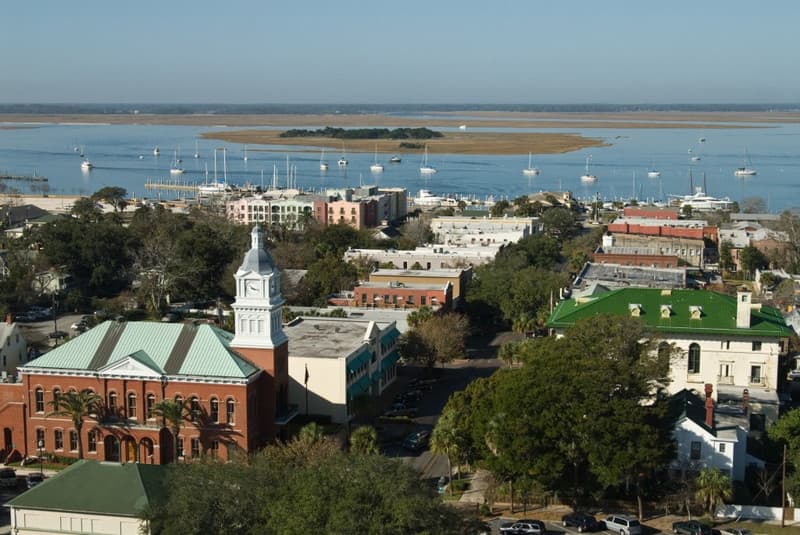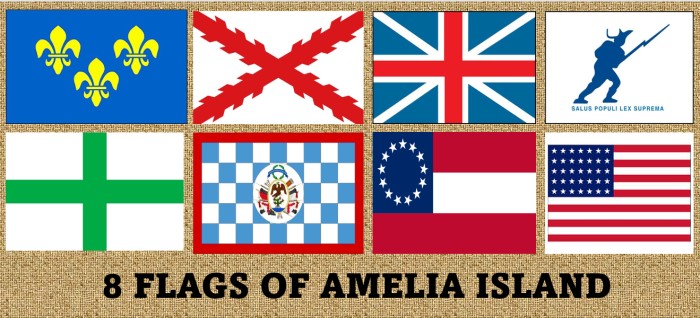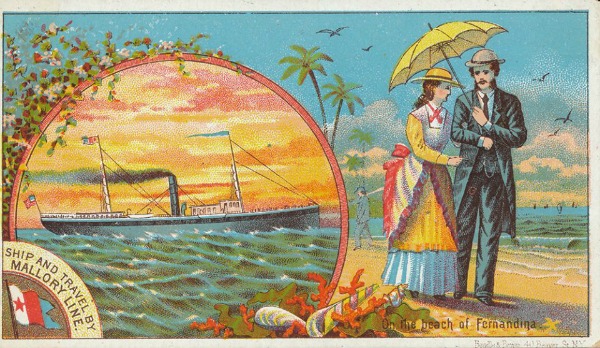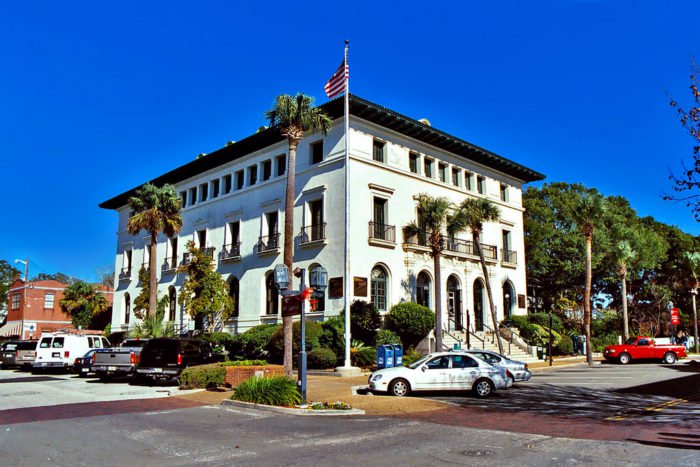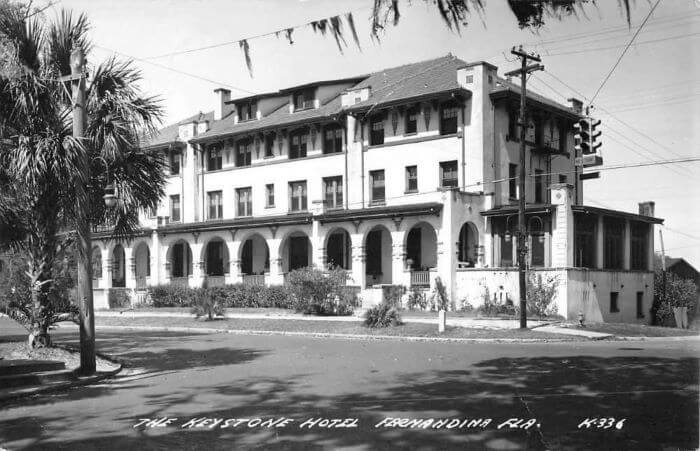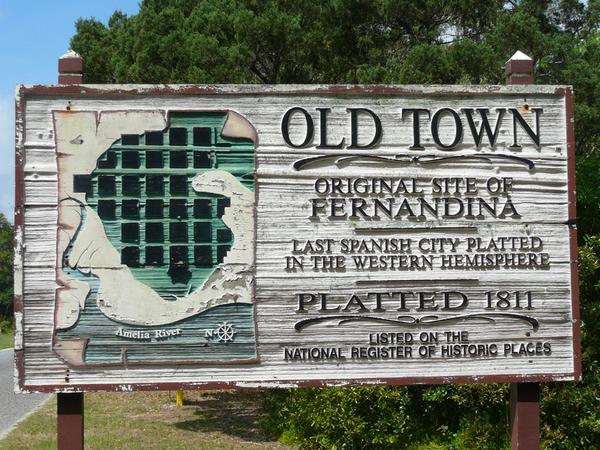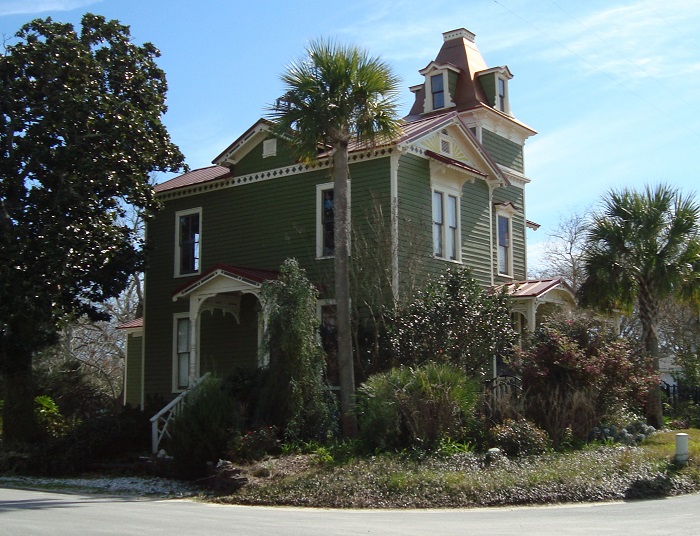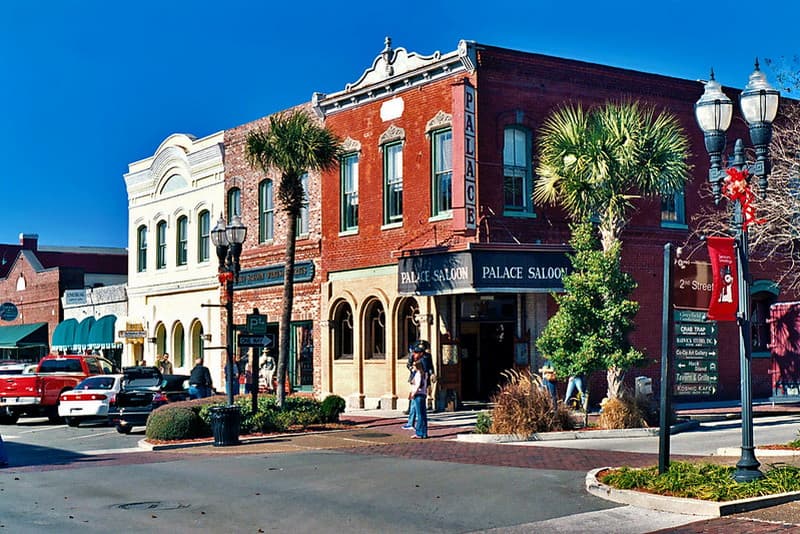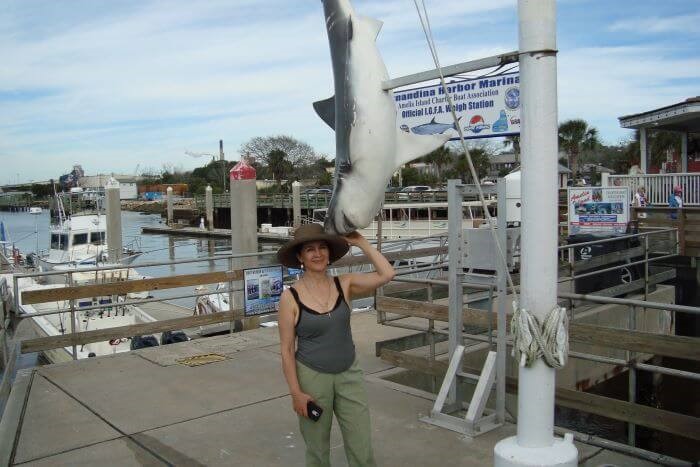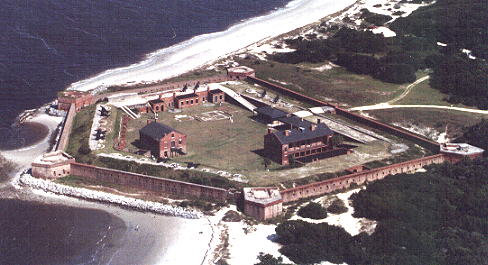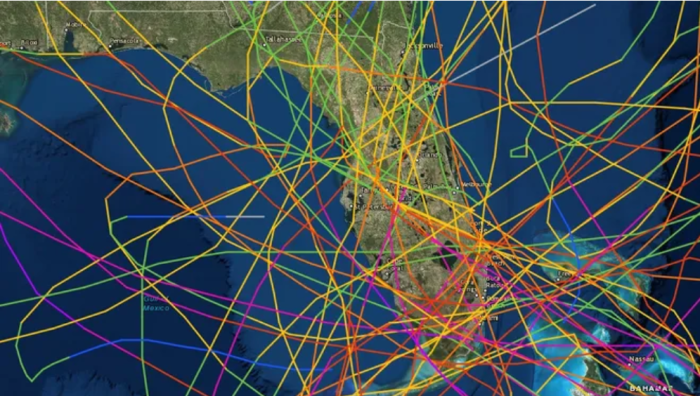- Home
- Florida Towns
- Fernandina Beach
FERNANDINA BEACH, FLORIDA
By Mike Miller Updated June 4, 2025
Fernandina Beach, Florida Things To Do, Lodging, Dining, & Real Estate At End Of Article
Fernandina Beach, Florida is on the coast of Northeast Florida as far north on the Atlantic Coast as you can get in the Sunshine State. The city is a natural deep water seaport 26 miles north of Jacksonville.
It is on the south bank of the St. Marys River that divides Florida and Georgia. Perched on the north end of Amelia Island, the northernmost barrier island of Florida's Atlantic Coast.
Amelia Island Florida is part of Nassau County, which is included in the Jacksonville metropolitan area. Fernandina Beach is the county seat.
Amelia City and American Beach are also two historic communities on the small island.
Fernandina Beach was one of Florida's first major cities. The downtown area of the town preserves and displays many of the old historic buildings.
HISTORY OF FERNANDINA BEACH, FLORIDA
The history of Fernandina Beach is so confusing that only a history professor can understand it fully.
It is the only United States location to have been under eight different flags.
Its fortunes rose and fell with the fate of Spain, France, England, The Confederate States of America, the English American Colonies and the United States of America.
Fernandina thrived in the years just before and after the U.S. Civil War, and up until just after 1900.
Fort Clinch was built in 1847, and in the 1850's Fernandina became the eastern terminus of Florida's first cross-state railroad.
The railroad was built by Senator David Levy Yulee who planned the eastern and western terminals at deep water ports to facilitate ocean shipping. The railroad ran from Fernandina Beach to Cedar Key on the Gulf of Mexico.
He was also prominent as a United States Senator. He was elected as Florida was admitted as a state in 1845, holding that position until 1851.
He was then re-elected in 1855, working until he resigned in 1861 to support the Confederacy. He was briefly imprisoned after the war and then later pardoned.
Tourists came by steamboat from New York and other northern cities down to the state of Florida and Fernandina became a popular destination.
Visitors loved to stay in the city's beautiful hotels and enjoy the pristine beaches, much like today.
The shipping industry boomed with outgoing cargoes of lumber, naval stores and phosphate, and incoming loads of tourists.
By the early 1900's, however, the tourism trade had moved south to St. Augustine, and Fernandina became somewhat isolated.
FERNANDINA BEACH FLORIDA TODAY
Today Fernandina Beach it is a bustling little city of about 13,052 people living within the city limits.
Probably at least that many more live on that part of Amelia Island not within the city limits.
It is a self sufficient place with a solid paper industry, a shrimp fleet, and plenty of service industry jobs generated by the affluent retirement and second home communities of southern Amelia Island.
FERNANDINA BEACH CENTRE STREET
The historic district of Fernandina has been carefully preserved. Many houses and buildings remain as proof that this was a very prosperous town.
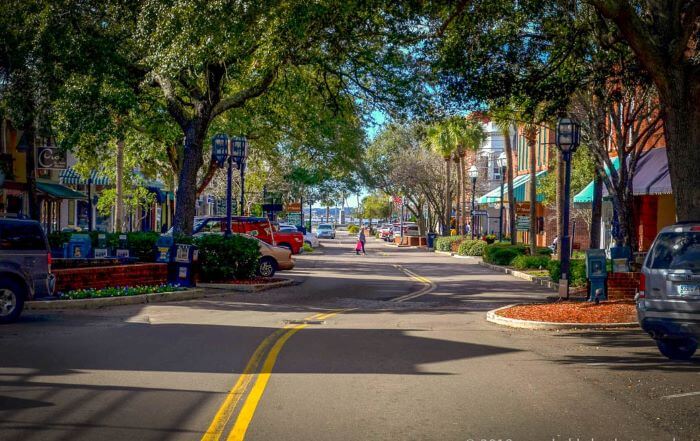
Photographic Destinations by Bob Kyle
There are dozens of unique shops along with good restaurants and cafes, live music and horse-drawn carriage and trolley tours.
You can enjoy a leisurely sunny day or warm evening strolling along the main artery, Centre Street.
One spot you may want to stop in is a place called The Palace Saloon, which bills itself as the oldest continuously running bar in Florida, opening in 1903.
It even remained open during prohibition, where the owner made money selling gasoline, ice cream, cigars, and according to local lore, a bit of his own whiskey.
After prohibition it returned to its full glory, welcoming locals, élite visitors including the Rockefellers and Carnegies, along with passing ship captains.
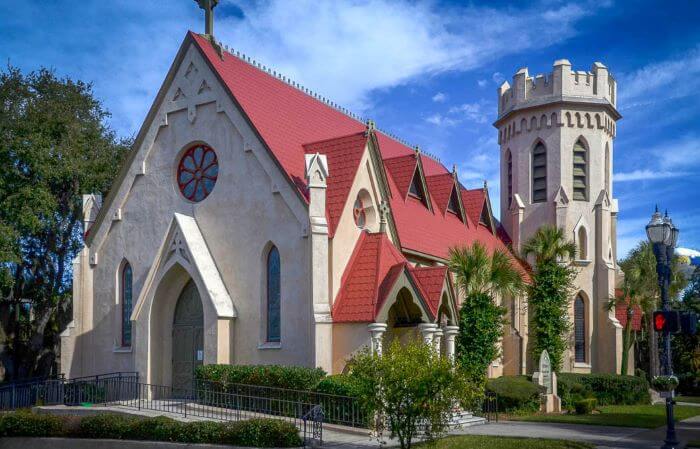
Photographic Destinations by Bob Kyle
Several of the large Victorian houses, along with the entire "Old Town" district, the now downtown district, the "jail" (now the historic museum) and the lighthouse are all registered on the National Register of Historic Places.
Fernandina Beach has managed to keep its charm as a quiet beach community and still offer many things to do.
The island is also known for having some of the best golf courses in north Florida.
These range from nice public municipal courses to Arnold Palmer-designed courses at the Golf Club of North Hampton to the Pete Dye course and golf vacation packages offered at the Omni Amelia Island Resort.
The island has 13 miles of beautiful beaches along the Atlantic Ocean and Fernandina has over 40 public beach access points. Although many do not have parking facilities they are generally walkable from where you are staying.
Numbered north to south, starting at Main Beach Park. This popular beach park has 2 sand volleyball courts, outdoor showers, a playground and a skateboard facility.
It is ADA accessible, with a special matted ramp to allow easier travel for wheelchairs and strollers over sand, a floating beach wheelchair and 3 upright beach wheelchairs that can be rented.
FERNANDINA BEACH MOTELS
The City of Fernandina Beach and Amelia Island are blessed with a variety of lodging places. Accomodations range from the simplest of Mom and Pop motels to the Ritz Carlton (which is fantastic!), and prices vary accordingly.
I have a few suggestions to make:
- Amelia Schoolhouse Inn was originally built in 1886 and was completely restored in 2018 and is now a 17 room boutique inn in the heart of downtown Fernandina. Many of the original wood floors, brick, windows and more have been meticulously renovated. Tel: 904-320-0918.
- Holiday Inn Express, Days Inn, Comfort Inn and other national low cost chains have locations at the I-95 exit.
- The Amelia Island Williams House is one of several wonderful bed and breakfast inns located in the historic downtown area of Fernandina Beach. The rooms are large, and feature whirlpool tubs. A southern breakfast is served, and wine is served on the verandah at sunset. Tel: 800-414-9258.
FERNANDINA BEACH ATTRACTIONS
- Amelia Island's annual Isle of Eight Flags Shrimp Festival
is Fernandina Beach's biggest event. It is held every year the first
weekend in May, attracting more than 100,000 visitors. The art show is
well attended and has over 300 booths. The Festival features live
musical entertainment at the
riverfront stage, shrimp dishes cooked in many different ways, a decorated shrimp boat contest, and
plenty for kids to do. Friday night has fireworks, and the harbor is
invaded by a pirate ship.
- The Amelia Island Museum of History is well
worth a visit. Located in the former Nassau County jail, the museum has articles from the Timucuan tribe, the
Spanish and French explorers, and mementos from the other diverse
cultures that are the heritage of Amelia Island and Fernandina Beach.
233 South Third Street, Fernandina Beach. Hours are Monday through
Saturday, 10 am-4 pm, and Sunday has afternoon hours from 1 pm-4 pm. Telephone 904-261-7378.
- Amelia Island Lighthouse, the oldest working lighthouse in the state, was built in 1838 and first used before Florida was officially a state, lighting the way for countless ships. Tours are limited and visitors are not permitted to climb the stairs inside but you can learn more about the area's history.
- Fort Clinch State Park is one of the best preserved 19th century forts in the United States. It is part of the Florida State Park system. It was used during both the Civil and Spanish-American wars, although it never saw combat.
You will enjoy the daily tours of the fort. Re-enactors dressed in period uniforms will chat you up and you will feel like you took a time machine back in years.
The family-friendly park also has a wonderful campground, picnic shelters, and plenty of trails to hike and bike among historic oaks and abundant plants.
Wildlife you may see include deer, armadillos, gopher tortoises, and many species of birds. The park also offers many water activities including swimming, fishing, shelling and shark tooth hunting along the beaches.
- The Amelia River offers a variety of popular activities, from river tours and private charters to watch for dolphins, manatees and other wildlife to evening cruises to watch the beautiful red hued sunsets.
THINGS TO DO IN FERNANDINA BEACH
- Visit Fort Clinch State Park: a historical site with a museum and living history demonstrations.
- Stroll down Centre Street: a charming street lined with local shops and restaurants.
- Amelia Island Historic District: a historic district featuring beautiful 19th-century homes and buildings.
- Take a boat tour: explore the waterways and wildlife of Amelia Island on a guided boat tour.
- Go beachcombing: Fernandina Beach is known for its miles of pristine beaches, perfect for shelling and relaxing.
- Visit the Amelia Island Lighthouse: one of the oldest lighthouses in Florida, now a museum.
- Play Golf: Amelia Island is home to several golf courses, including the Golf Club of Amelia Island.
- Shop for local arts and crafts: find unique gifts and souvenirs at the Fernandina Beach Market Place.
- Visit historic American Beach and its museum. An early resort for African Americans in the Jim Crow era.
ALL ABOUT FERNANDINA BEACH, FLORIDA
Fernandina Beach Florida is about 11 miles east of I-95 Exit 373. This exit is about 10 miles south of the Georgia-Florida border.
Travel east through Yulee on SR-A1A, also known as The Buccaneer Trail, and shown as Highway 1A on this Google map.
Continue on SR-A1A east to Amelia Island, then follow the road as it bends north into Fernandina's historic downtown section.
FERNANDINA BEACH INTERACTIVE MAP
Our Facebook page has more than 130,000 followers who love off the beaten path Florida: towns, tourist attractions, maps, lodging, food, festivals, scenic road trips, day trips, history, culture, nostalgia, and more. Our daily free Ezine, Florida Heritage Travel, has more than 18,000 subscribers.
By Mike Miller, Copyright 2009-2025
Florida-Back-Roads-Travel.com
Florida Back Roads Travel is not affiliated with or endorsed by Backroads, a California-based tour operator which arranges and conducts travel programs throughout the world.
